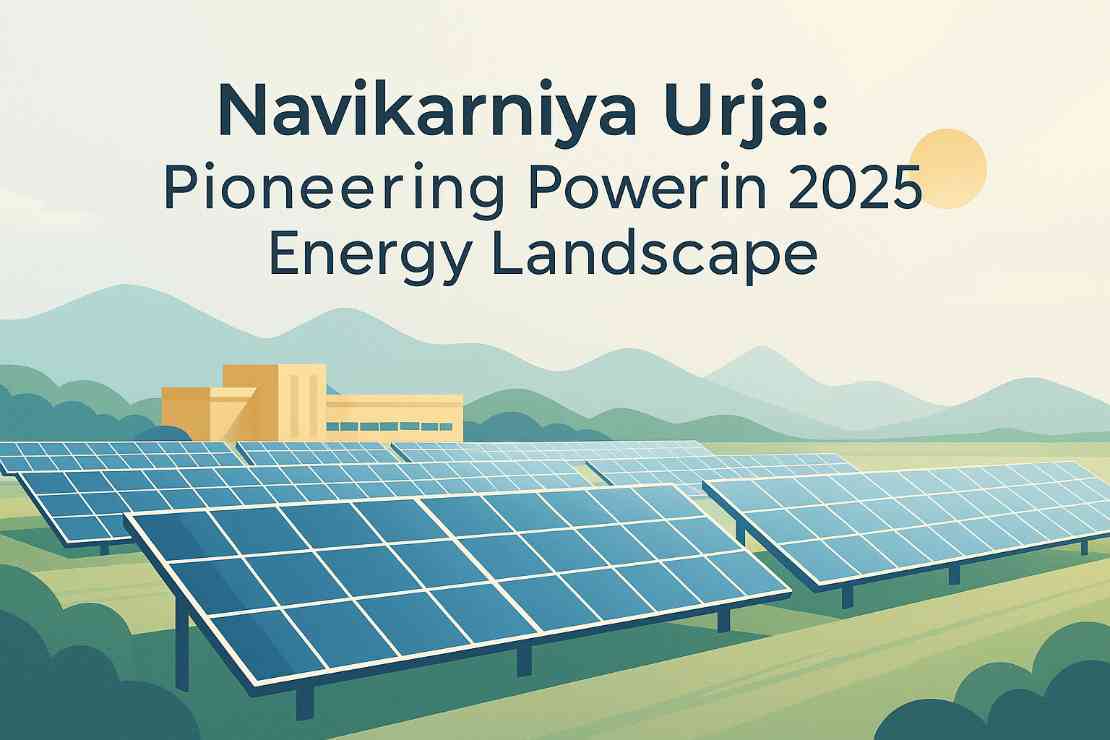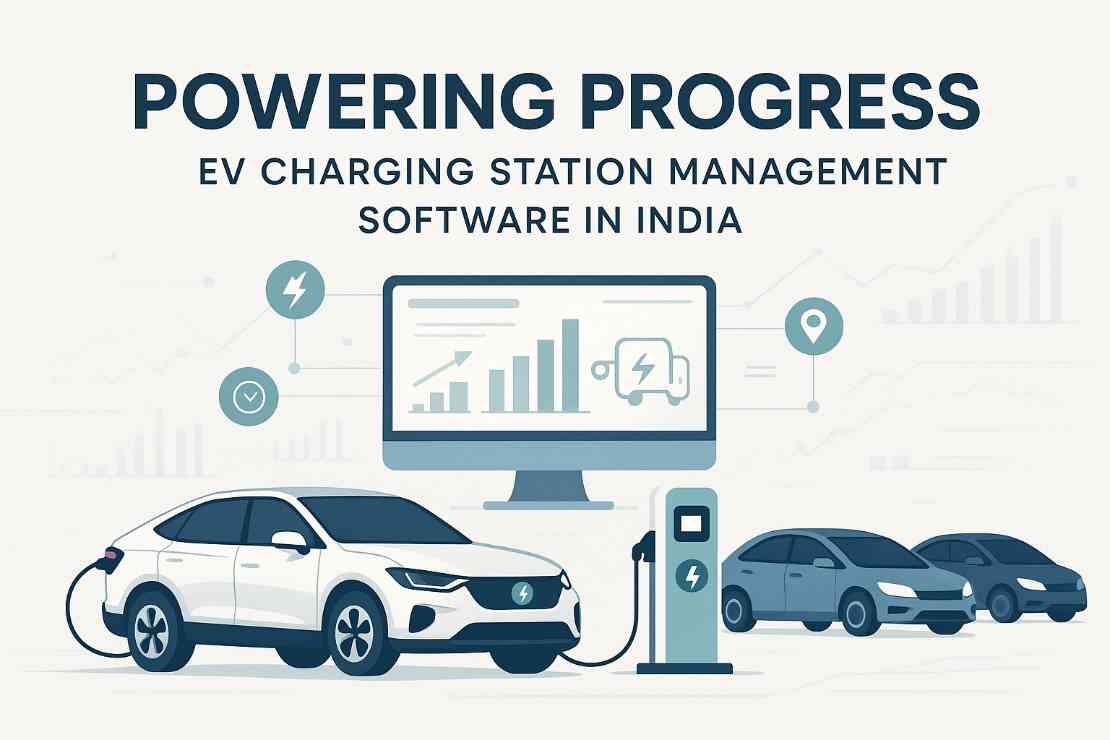Introduction:
When you think about the future of <a href="https://pulseenergy.io/blog" class="internal-link" target="_blank" rel="noopener">renewable energy</a>, you quickly realize that innovation and progress go hand in hand. Navikarniya Urja stands at the forefront of this evolution, leading the way with groundbreaking projects that harness solar power to create a sustainable energy future. In today’s dynamic energy market, you need reliable, forward-thinking initiatives that not only meet rising power demands but also drive your country toward greener, cleaner power generation. As governments and industries pivot to prioritize renewable energy, Navikarniya Urja captures the imagination of engineers, project managers, and energy policy experts alike with its ambitious solar tenders.
You may have heard about the impressive 40MW tender issued for a solar power project in Madhya Pradesh, or perhaps the 25MW grid-connected solar project initiated in West Bengal. These projects, along with a 20MW AC solar project in Orissa, illustrate the breadth and depth of Navikarniya Urja’s commitment to advancing renewable energy solutions. By actively bidding for and executing these projects, Navikarniya Urja advances not only technological progress but also promotes tangible sustainable growth throughout the energy industry. In this article, you will dive into the inner workings of Navikarniya Urja, explore the engineering processes involved in their solar projects, and learn how current government policies and market trends are shaping a renewable future in 2025.
Throughout our exploration, you will gain practical insights that allow you to understand the challenges and opportunities in this evolving landscape. We will discuss the innovative solutions that drive project success, the integration of state-of-the-art technologies in solar energy, and the regulatory framework that supports these initiatives. As you explore the opportunities provided by Navikarniya Urja, you will see how each project contributes to a comprehensive, sustainable energy strategy across India. So, let’s embark on this journey to understand how Navikarniya Urja not only powers communities but also redefines what is possible within the renewable energy sector.
Overview of Navikarniya Urja and Its Role in the Energy Industry
Navikarniya Urja occupies a critical role within the renewable energy ecosystem, particularly in the rapidly expanding solar power market. As you examine the organization’s approach, you will notice that it centers on delivering engineering, procurement, and construction (EPC) solutions for large-scale solar projects. Backed by a robust infrastructure and specialized technical teams, Navikarniya Urja leverages both innovation and proven expertise to spearhead projects that contribute significantly to national sustainable energy goals.
From its inception, Navikarniya Urja has maintained a clear focus: to drive the energy revolution by upgrading and expanding solar power generation capacities. Its involvement in projects ranging from 20MW to 40MW projects illustrates the organization’s flexibility and commitment to cater to diverse energy needs. You will appreciate that the company’s portfolio not only includes tendering initiatives that attract quality bids from top engineering firms but also showcases its dedication to efficient project execution. When you look at the tender for a 40MW solar power project in Madhya Pradesh, you see how Navikarniya Urja propels the smart integration of solar farms into regional power grids.
In the modern context, where sustainability and cost-effectiveness are essential, Navikarniya Urja uses the latest technologies to ensure that every project meets rigorous engineering and safety standards. You can count on their strategic project planning, which involves mapping sites, detailed environmental assessments, and harnessing digital tools for real-time performance tracking. By doing so, Navikarniya Urja positions itself as a key stakeholder that not only addresses current energy challenges but also anticipates future demands in the energy sector.
The company’s active role in solar energy also aligns with national policies aimed at reducing carbon emissions and promoting renewable energy adoption. As governments drive regulatory changes in 2025, you see that initiatives like these provide the beating heart of the country’s energy transition. It is this blend of strategic foresight, technical excellence, and policy support that makes Navikarniya Urja an influential player and a reliable partner in your pursuit of sustainable energy solutions.
Key Projects and Tender Initiatives of Navikarniya Urja
Navikarniya Urja has consistently demonstrated its commitment to renewable energy through a series of high-impact projects. In 2025, its recent tenders have created substantial interest among EPC firms and have further solidified its reputation in the energy sector. You might ask: what exactly are these projects and how do they benefit you as part of a larger energy ecosystem? Let’s dive into some real-world examples.
One of the standout projects is the 40MW solar power project initiated at the Johilla Area in Umaria, Madhya Pradesh. This project not only marks a significant milestone in capacity addition but also illustrates Navikarniya Urja’s ambition to integrate renewable energy into regions with high energy demand. By bidding for engineering, procurement, and construction work, Navikarniya Urja ensures that local technology, workforce, and systematic project execution are all aligned with national renewable energy targets.
Another exciting project is the 25MW grid-connected solar project based at a coal washery site in Purulia, West Bengal. This initiative represents a paradigm shift for locations historically associated with fossil-fuel industries. Here, Navikarniya Urja transforms potential liabilities into opportunities by harnessing solar energy. This project not only aids in diversifying the energy mix but also plays a transformative role in local economies. When you consider its economic implications, projects like these directly contribute to job creation, enhanced local infrastructure, and overall energy security.
Adding to the portfolio is the tender for a 20MW AC solar project in Orissa. In issuing such tenders, Navikarniya Urja creates a competitive environment that fosters innovation and drives down project costs. This competitive bidding process encourages the adoption of state-of-the-art solar technologies and enables project developers to implement best practices in design, installation, and grid integration.
The table below summarizes the key projects initiated under Navikarniya Urja’s portfolio:
Each tender reflects a clear strategic decision by Navikarniya Urja to enhance solar power capacity, reduce dependence on conventional energy sources, and drive a transition toward cleaner energy. As you look at the scale and scope of these projects, it becomes apparent that Navikarniya Urja positions itself as a critical facilitator in the renewable energy transition. Its targeted approach not only benefits local communities by providing decentralized energy solutions, but also contributes to a larger vision of sustainable growth and reduced carbon footprints.
Technology and Innovations Shaping Solar Projects
When you explore the realm of solar energy, you discover that technology continuously evolves, and innovations have become the backbone of project success. Navikarniya Urja integrates advanced engineering solutions and digital tools to ensure that projects are delivered efficiently and effectively. As you engage with these technical imperatives, you recognize the importance of cutting-edge technology in maximizing solar power output and reducing operational challenges.
For instance, many solar projects under Navikarniya Urja incorporate smart grid solutions that allow real-time monitoring and maintenance. When you use these systems, you can instantly identify performance anomalies, thereby reducing downtime. In addition, digital sensors and remote data acquisition devices provide project teams with the information needed to optimize the operational parameters of solar farms. This intelligent monitoring helps safeguard investments while maximizing energy yield, essential in today’s competitive renewable energy market.
Furthermore, innovations in photovoltaic (PV) technology have improved the efficiency of solar panels dramatically. You might find that high-efficiency panels and inverter technologies contribute to better performance even under sub-optimal weather conditions. Navikarniya Urja leverages these advancements to ensure that its projects meet and often exceed the expected capacity factors. This leads to improved return on investment (ROI) and lowers the cost per unit of generated renewable energy.
Another significant technological trend in 2025 is energy storage integration. As solar projects become increasingly grid-connected, you understand the need to pair solar generation with robust energy storage solutions. Energy storage systems provide stability in power output, especially during peak demand hours. Navikarniya Urja, aware of this growing necessity, is exploring partnerships with energy storage providers to integrate batteries and other storage solutions into upcoming projects. This integration not only enhances grid reliability but also helps to regulate energy prices in a dynamic market.
Moreover, the competitive tender process demands that contractors stay abreast of the latest global best practices. As an engineer or project manager, you benefit from standardized EPC practices that promote efficiency and reliability. Digital twin technologies and simulation models are among the tools being explored to predict project outcomes accurately before actual deployment, thereby mitigating risks associated with on-site construction challenges.
Government Policies and Regulatory Support in the Renewable Landscape

The growth of Navikarniya Urja’s solar projects aligns closely with supportive government policies and regulatory frameworks that drive renewable energy in India. As you examine the broader policy environment for 2025, you will notice that the government has introduced a robust set of initiatives aimed at reducing carbon emissions, promoting green energy, and attracting private investments into renewable projects. These policies lay the groundwork for projects spearheaded by Navikarniya Urja to thrive.
The Ministry of New and Renewable Energy plays a pivotal role in shaping the renewable energy landscape. Strategic policies that encourage the adoption of solar power, provide subsidies, and streamline approval processes all contribute to creating a favorable environment for renewable initiatives. With these supportive measures in place, projects like the 40MW tender in Madhya Pradesh and the 25MW project in West Bengal gain the necessary momentum to become economically viable and technically sound.
You, as a participant in the energy industry, benefit from enhanced clarity in regulatory processes. The recent announcements by energy authorities and updates in the regulatory framework ensure that all players adhere to standardized practices while ensuring environmental compliance. This transparency mitigates the risk of project delays and inspires confidence among investors and engineering contractors.
Moreover, regulatory incentives often extend to technological innovations. For example, policies that encourage the adoption of energy storage systems, smart metering, and grid integration add value to new installations. As part of this regulatory drive, local governments also support initiatives focused on capacity building and workforce training, ensuring that the skilled manpower required to implement these projects is readily available. Navikarniya Urja has been proactive in collaborating with public bodies and industry associations to ensure projects are in line with both national directives and international best practices.
As you look toward the future, it is clear that regulatory support will grow even stronger. New frameworks and financial incentives are on the horizon to accelerate renewable energy deployment. This makes the energy market increasingly competitive and drives innovation in project planning and execution. Navikarniya Urja’s alignment with these regulatory changes ensures that you can expect quality, reliability, and future-proof solar power solutions in every project undertaken.
Industry Trends and Future Outlook for 2025
As you prepare for the energy landscape of 2025, it becomes evident that innovations in renewable energy, notably through solar power, will continue to dominate the market. Navikarniya Urja stands as a clear example of how focused initiatives can drive industry change and set benchmarks for efficiency, sustainability, and scalability. Being at the forefront of several major solar projects, the organization illustrates the future trends shaping the renewable energy industry.
One prominent trend is the integration of digital technologies in every phase of project development. You will see that digitalization is not only about monitoring but also about optimizing every aspect of solar plant performance. Tools such as simulation models, machine learning algorithms for predictive maintenance, and cloud-based project management platforms help streamline operations. With these technological advancements, projects run smoother and deliver better returns on investment, reinforcing the value of digital integration within Navikarniya Urja’s initiatives.
Another trend you need to watch is the rising importance of hybrid solutions that combine solar energy with energy storage and even wind capabilities. This trend addresses common issues such as grid stability and energy intermittency. Navikarniya Urja’s move towards integrating energy storage solutions and exploring diversification into complementary renewable resources fits perfectly with global best practices. You gain significant benefits from such integration, as it minimizes output fluctuations and protects your energy investments.
Furthermore, the focus on environmental sustainability continues to be a driving force. As governments and industry leaders push toward a carbon-neutral future, solar projects are at the very heart of this transformation. With clear commitments to reducing greenhouse gas emissions, projects undertaken by Navikarniya Urja lead you into an era where renewable energy not only powers industries but also enhances the quality of the environment. Economic benefits are undeniable: increased employment opportunities, innovation-driven growth, and an improved trade balance are just a few examples of how renewable energy projects provide a broader societal impact.
Looking ahead to 2025, market consolidation and strategic partnerships also emerge as critical growth components. You see that collaborations between government bodies, research organizations, and private players form the basis for large-scale renewable projects. Navikarniya Urja’s successful tenders and its ongoing partnerships with engineering firms underscore the importance of collaboration in driving sustainable energy development and meeting aggressive capacity targets.
Many analysts predict that India’s renewable energy capacity will continue to soar, thanks to continued policy support and the unwavering commitment of firms like Navikarniya Urja. As you evaluate the future outlook, it is clear that investments in renewable energy will yield substantial economic and environmental dividends. Whether you are a stakeholder, an investor, or simply curious about future energy trends, you can see that Navikarniya Urja’s approach offers a blueprint for success in a rapidly evolving market.
Conclusion:
In summary, Navikarniya Urja exemplifies the potential of focused, innovative, and forward-thinking approaches in the renewable energy industry. You have seen how its strategic initiatives—from the 40MW tender in Madhya Pradesh to its pioneering 25MW grid-connected project and the competitive 20MW AC solar tender in Orissa—play a critical role in transforming the energy sector. The organization not only drives technological excellence by integrating state-of-the-art digital systems and advanced PV technologies but also ensures that its projects align with evolving regulatory standards and government policies for sustainability.
If you are interested in understanding the future of renewable energy, Navikarniya Urja’s projects serve as a case study of how commitment to quality and innovation leads to success. Their proactive approach in adopting digital tools, fostering industry collaboration, and targeting diverse energy markets confirms that they are well-prepared for the challenges of 2025 and beyond. As the energy landscape continues to evolve, you can confidently expect more groundbreaking initiatives that will further enhance reliability, efficiency, and environmental sustainability. Let this be a catalyst for you to explore, invest in, or support renewable projects that define the future of energy.
FAQ:
Q: What is the primary focus of CNUL?
A: CNUL primarily focuses on pioneering renewable energy by delivering large-scale solar projects through innovative EPC solutions, ensuring a sustainable energy future.
Q: What solar power projects or tenders has CNUL initiated?
A: CNUL has initiated projects such as a 40MW solar project in Madhya Pradesh, a 25MW grid-connected solar project in West Bengal, and a 20MW AC solar project in Orissa, showcasing its diverse solar energy initiatives.
Q: Who is the parent company of CIL Navikarniya Urja Limited?
A: The parent company is a well-established organization in the conventional energy sector that provides the financial stability and technical expertise supporting CNUL’s renewable endeavors.
Q: When is the Second Annual General Meeting of CNUL scheduled?
A: The schedule for the Second Annual General Meeting of CNUL has not been disclosed in the article and is expected to be announced in the near future.
Q: How is CIL Navikarniya Urja Limited classified as a company?
A: It is classified as an engineering and construction-focused renewable energy entity specializing in large-scale solar projects.








